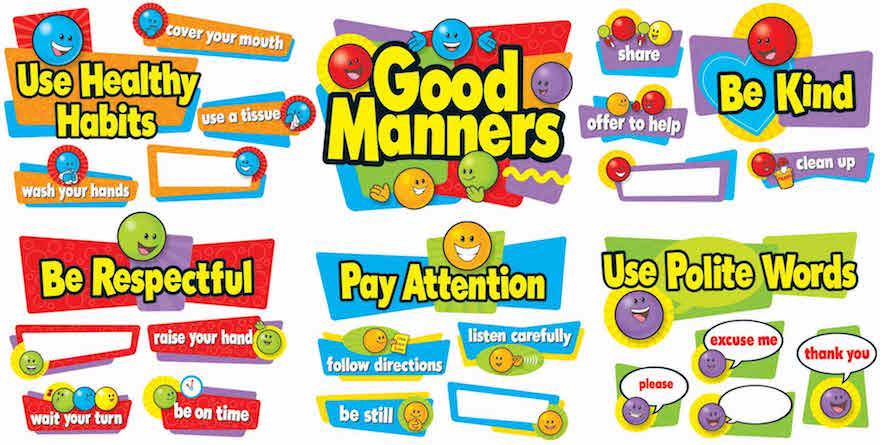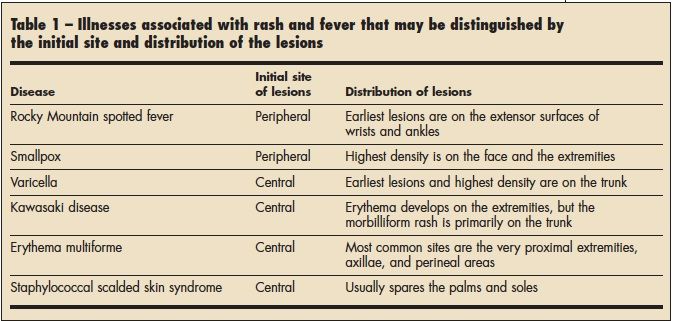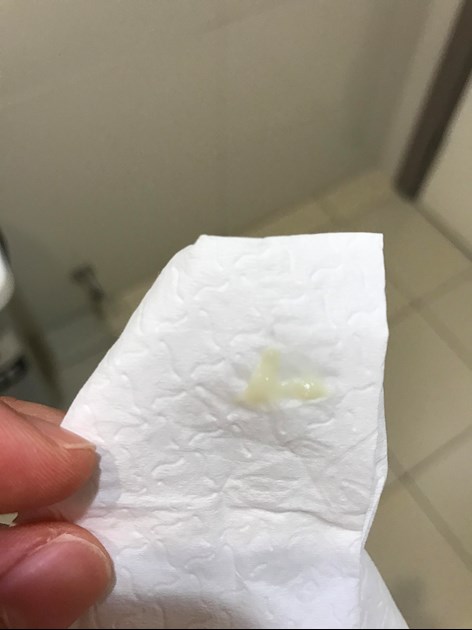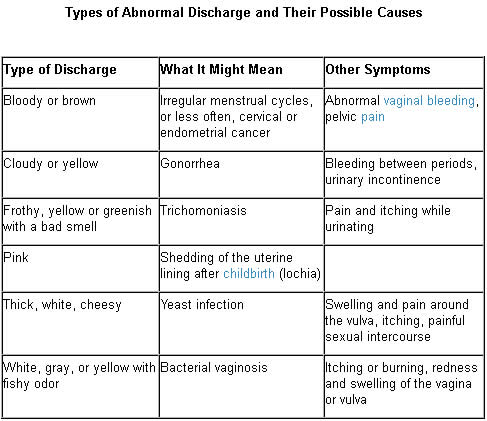Delivery after pregnancy
Recovering From Delivery - Postpartum Recovery
Your body has just done one of the most remarkable things it will ever do: grow another human being. After 9 months of waiting, you are probably excited to finally be home with your new baby. Much of your focus and energy during the coming weeks and months will be on baby, but remember that you also need to take care of yourself, too.
Your delivery may have been complicated or easy. You may have had a cesarean birth (C-section) or vaginal delivery. You may have labored for a few hours or a few days. No matter what your delivery looked like, your body has been through a trauma just the same. It is going to need time to recover.
Your postpartum recovery won’t be just a few days. Fully recovering from pregnancy and childbirth can take months. While many women feel mostly recovered by 6-8 weeks, it may take longer than this to feel like yourself again. During this time, you may feel as though your body has turned against you. Try not to get frustrated. Remember that your body is not aware of your timelines and expectations. The best thing you can do for it is rest, eat well, and give yourself a break.
During this time, your hormones also will be fluctuating. You may not be thinking clearly and will be more emotional. Again, give yourself time for this to pass. However, if at any time you think about hurting yourself or your baby, tell someone.
Path to improved health
It took the better part of a year to grow and have a baby. Take comfort in knowing that, for the most part, you will begin to feel like yourself much sooner than that. In a few months, you should be well on your way to recovery.
That is not to say that postpartum recovery won’t have its challenges. It is very common to feel as though your body is not healing as quickly as you’d like. Remember, the more you can rest your body and let it fully recover, the better you’ll be for it. Even if you can only manage to eat, sleep, and care for your baby, that is enough.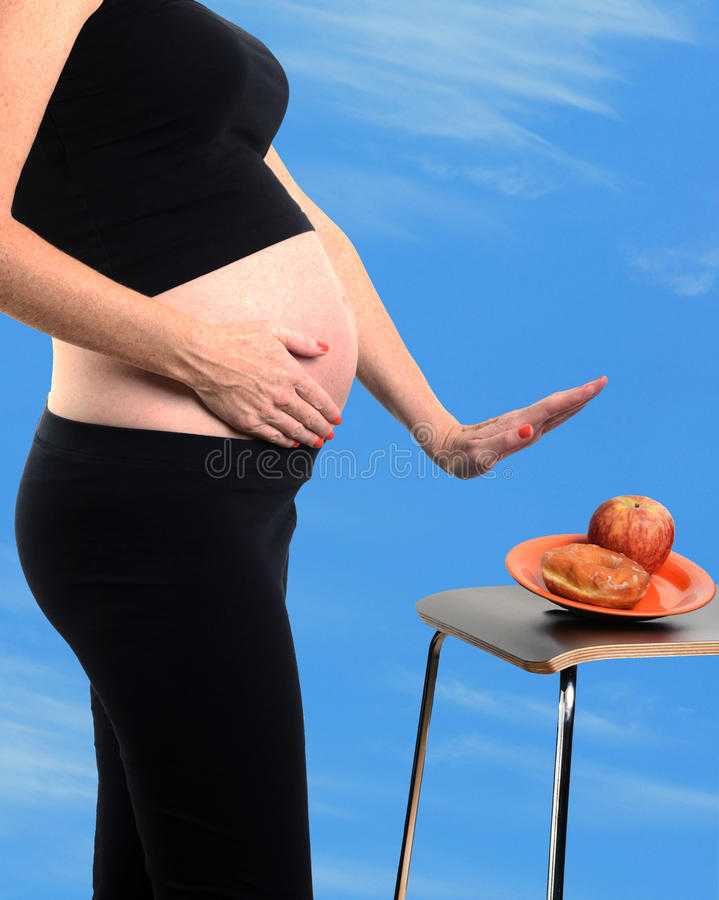
During the first six weeks, pay attention to your body. You’ll be tired and focused on your baby, but try to notice changes with your own body. This is very important as you heal.
As you begin to feel better, resist the temptation to do more. Overdoing things at this point can set you back in your recovery. Concentrate on nourishing your body with good foods, drinking plenty of water (especially if you are breastfeeding), and getting enough rest.
If you’ve had a C-section, you’ll have more restrictions about what you can do in the days and weeks following childbirth. Common don’ts include driving and lifting anything heavier than your baby. Your doctor will let you know when you can resume normal activities.
Here is more of what you can expect during your postpartum recovery.
Abdominal pain. As your uterus shrinks back into its normal size and shape, you will feel pain in your abdomen (lower belly). These pains are called “afterpains.” Most of these pains will be dull, but some will be sharp.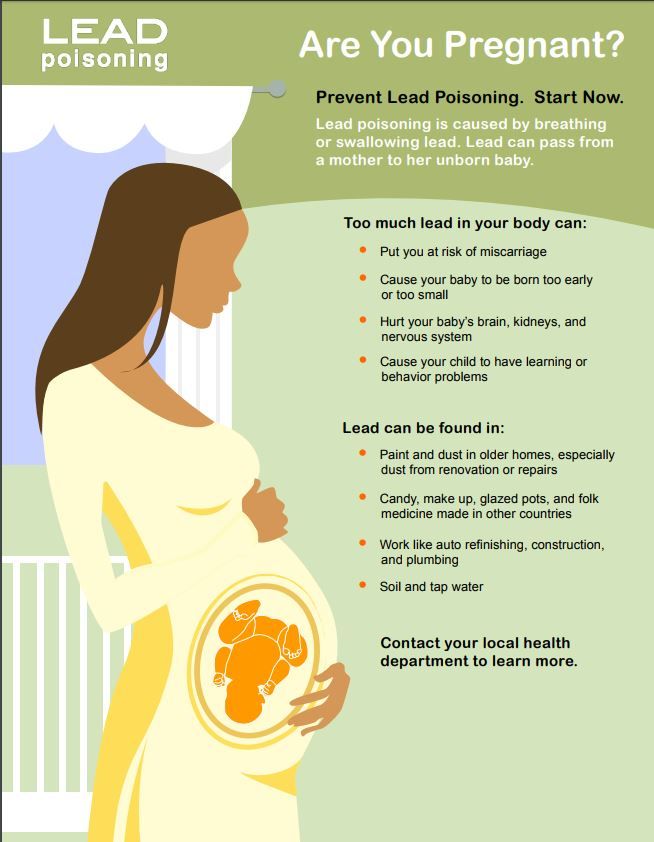 You may feel more of these pains as you breastfeed your baby. That is because breastfeeding stimulates a chemical in your body that causes the uterus to contract (tighten). For many women, applying heat to the area helps control the pain. Consider using a heating pad or hot water bottle. Your abdominal pain should ease up over time. If these pains get worse or don’t let up, you should call your doctor.
You may feel more of these pains as you breastfeed your baby. That is because breastfeeding stimulates a chemical in your body that causes the uterus to contract (tighten). For many women, applying heat to the area helps control the pain. Consider using a heating pad or hot water bottle. Your abdominal pain should ease up over time. If these pains get worse or don’t let up, you should call your doctor.
Baby blues. You are so excited and happy to bring baby home. The next minute, though, you are sad. It can be confusing, especially to new moms. Know that many women (70-80%) struggle with feeling sad the first few weeks after having a baby. It is commonly called the “baby blues” and is caused by hormone changes. It is nothing to be ashamed of. In fact, confiding in a friend of family member can often make you feel better. If these feelings last more than a few weeks or you are not able to function because of them, you could have postpartum depression. Postpartum depression is more serious than baby blues.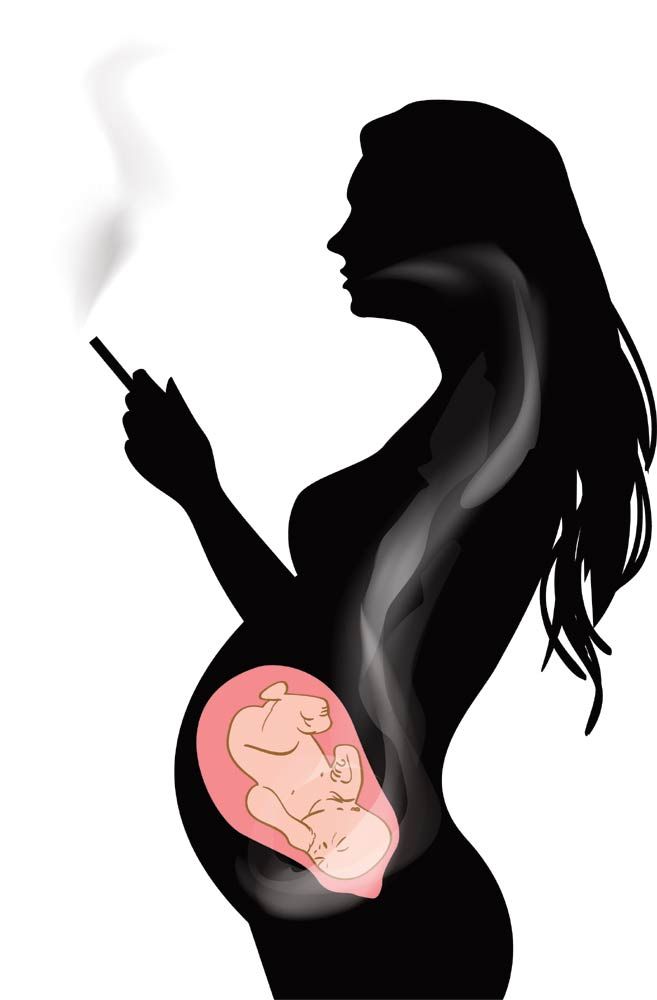 If you have severe feelings of sadness or hopelessness, you should call your doctor.
If you have severe feelings of sadness or hopelessness, you should call your doctor.
Constipation. It is very common to be constipated in the days following childbirth. There are several things that could cause this. If you received any pain-relieving drugs in the hospital, they could slow down your bowels. If you had anesthesia (a pain blocker) for any reason, that also can cause it. Sometimes, postpartum constipation is brought on simply by fear. This is true especially if you have stitches because you had an episiotomy (a surgical cut between the vagina and anus to widen the vaginal opening for childbirth) or tore this area during delivery. You may be afraid of damaging the stitches or be afraid that a bowel movement will cause even more pain in that area. To help ease constipation, drink plenty of water and try to eat foods that offer a lot of fiber. In many cases, you may want to talk to your doctor about prescribing a stool softener (such as Colace or Docusoft). If you haven’t had a bowel movement by four days postpartum, call your doctor.
If you haven’t had a bowel movement by four days postpartum, call your doctor.
Hemorrhoids. You may have developed hemorrhoids (painful swelling of a vein in the rectum) during your pregnancy. If not, you may have gotten them from the strain and pushing during delivery. They can cause pain and bleed after a bowel movement. They also itch. You can get some relief from the pain and itching by applying witch hazel to your hemorrhoids. This is especially effective if you keep the witch hazel in the refrigerator. Your hemorrhoids should shrink over time. If not, contact your doctor.
Hormonal shifts. Besides fueling your mood swings (see “Baby blues,” above), hormones are also responsible for other postpartum symptoms. You may be sweating more, especially at night when you sleep. Just make sure that your sweating is not accompanied by a fever. That could be a sign of infection. Hormonal changes also cause hair loss for many new moms. This is only temporary. When your estrogen levels increase, your hair will return to its normal thickness.
When your estrogen levels increase, your hair will return to its normal thickness.
Perineum soreness. The perineum is the area between your vagina and anus. Many times, this area will tear during childbirth. Other times, your doctor may have to make a small cut in this area to widen your vagina for childbirth. Even if neither of these things happened during your vaginal birth, your perineum will be sore and possibly swollen postpartum. You may feel discomfort in this area for several weeks. While you recover, sitting on an icepack several times a day for 10 minutes will help relieve the pain. This is especially good to do after going to the bathroom. During the first week postpartum, also use a squirt bottle to rinse the perineum with warm water after using the toilet. Notify your doctor if your perineum area does not get less sore each day or you have any sign of infection.
Sore nipples and breasts. The first few days of breastfeeding, it is normal for women to have sore nipples and breasts. If the soreness continues beyond a few days, it could be that the baby isn’t latching correctly. Try changing positions or consult a lactation expert (breastfeeding expert) for help. Do this before your nipples develop painful cracks, which could sideline your breastfeeding. The American Academy of Family Physicians (AAFP) recommends that all babies, with rare exceptions, be breastfed and/or receive expressed human milk exclusively for the first six months of life. Breastfeeding should continue with the addition of complementary foods throughout the second half of the first year.
If the soreness continues beyond a few days, it could be that the baby isn’t latching correctly. Try changing positions or consult a lactation expert (breastfeeding expert) for help. Do this before your nipples develop painful cracks, which could sideline your breastfeeding. The American Academy of Family Physicians (AAFP) recommends that all babies, with rare exceptions, be breastfed and/or receive expressed human milk exclusively for the first six months of life. Breastfeeding should continue with the addition of complementary foods throughout the second half of the first year.
Stitches. If you have stitches due to a torn or cut perineum (see “Perineum soreness,” above), it will take 7-10 days to heal. The stitches will absorb over time. It is important that you keep the stitches from getting infected by gently cleaning them with warm water after each time you use the toilet. Do this by using a squirt bottle to rinse the area and pat it dry. Do not wipe the area with toilet paper or you could irritate the stitched area. No matter how eager you are to check the healing progress, try to keep you hands off the stitches. If the area begins to hurt worse or the stitches seem weepy, contact your doctor. It could be a sign of infection.
No matter how eager you are to check the healing progress, try to keep you hands off the stitches. If the area begins to hurt worse or the stitches seem weepy, contact your doctor. It could be a sign of infection.
If you have stitches from a cesarean birth (C-section), these heal in varying degrees. The stitches in the skin should heal in 5-10 days. The underlying stitches in your muscle layer will take longer to heal. These won’t completely heal for 12 weeks. For the stitches that you can see, make sure to watch for any signs of infection. These signs include if the incision area is red, swollen, or weeping pus; or if you have a fever.
Vaginal bleeding and discharge. After giving birth, it is common that you will have vaginal bleeding and discharge (this is called lochia), even if you had a C-section. This is your body’s way of eliminating the extra blood and tissue that was used to grow and nourish your baby. Expect for this to be heavier at first (up to 10 days), but then taper off.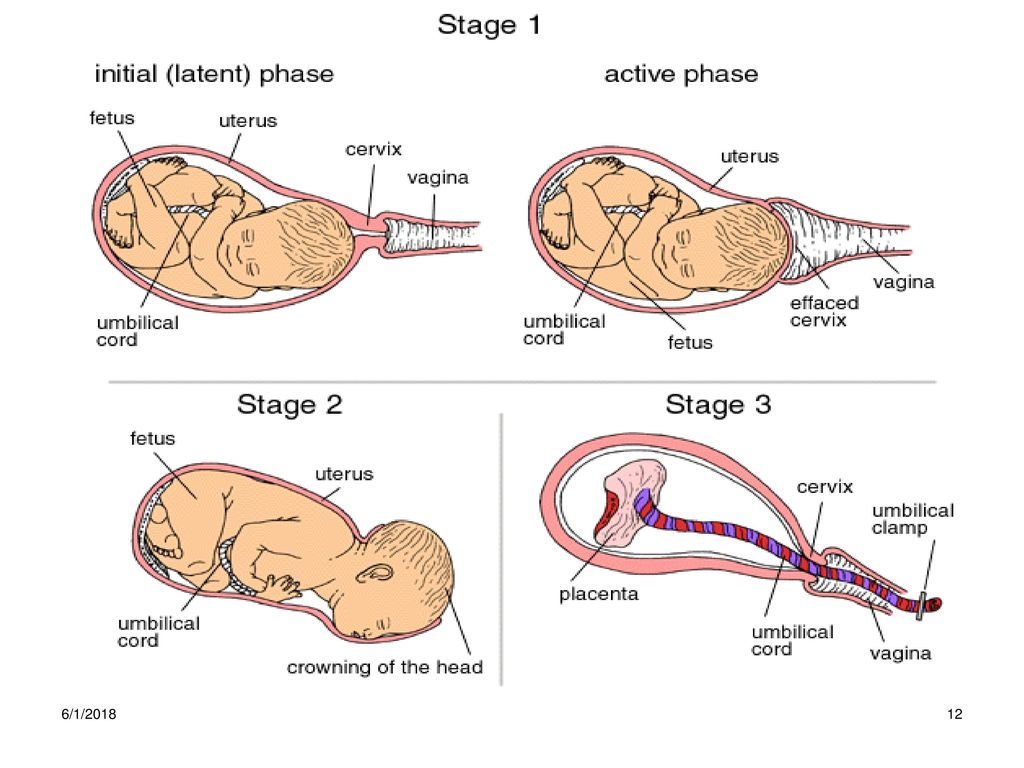 Light bleeding and spotting can last up to six weeks after delivery. It is important that you use only sanitary pads during this time. Using tampons can introduce bacteria and lead to infection. Also expect to pass some clots, especially the first week. If clots are bigger than a quarter, you should contact your doctor.
Light bleeding and spotting can last up to six weeks after delivery. It is important that you use only sanitary pads during this time. Using tampons can introduce bacteria and lead to infection. Also expect to pass some clots, especially the first week. If clots are bigger than a quarter, you should contact your doctor.
Water retention. You may be eager for that swelling you noticed during your pregnancy to go away. It won’t, though, for a while longer. Also known as postpartum edema (swelling), your body will continue to hold on to water because of an increase in a hormone called progesterone. You may notice the swelling in your hands, legs, and feet. It shouldn’t last much longer than a week after delivery. If it does or if it seems to get worse over time, be sure to tell your doctor.
Weight loss. If you were hoping for immediate weight loss after your baby was born, you were probably very disappointed. No mother is that lucky, no matter what you read in the tabloids.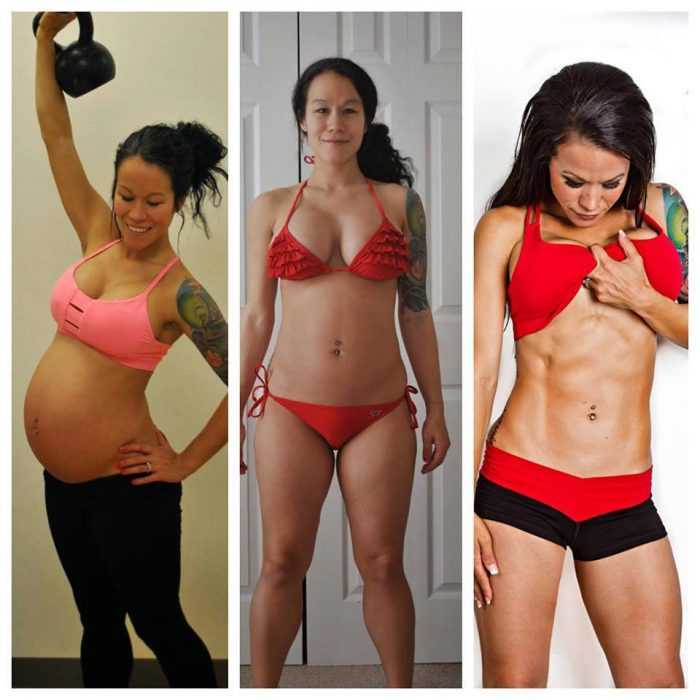 You can expect to lose about 6-12 pounds (depending on the size of your baby) during the birth. After that, your weight loss will slow considerably. Depending on how much weight you gained during pregnancy (the average is 25-35 pounds), it may take several months to lose the baby weight. For many women, breastfeeding seems to help promote weight loss. Other moms don’t see weight loss associated with breastfeeding. Try to keep your nutrition consistent while you are breastfeeding and do not get frustrated if it takes longer than you’d hoped to lose the weight.
You can expect to lose about 6-12 pounds (depending on the size of your baby) during the birth. After that, your weight loss will slow considerably. Depending on how much weight you gained during pregnancy (the average is 25-35 pounds), it may take several months to lose the baby weight. For many women, breastfeeding seems to help promote weight loss. Other moms don’t see weight loss associated with breastfeeding. Try to keep your nutrition consistent while you are breastfeeding and do not get frustrated if it takes longer than you’d hoped to lose the weight.
Things to consider
Pay attention to your body after giving birth. If something doesn’t seem right, it probably isn’t. Soreness is to be expected, but too much pain could mean something is seriously wrong. Don’t be so wrapped up in caring for your baby that you ignore your own health.
Just because you’ve made it through delivery, you are not necessarily out of danger for health complications. There are life-threatening problems related to childbirth that can happen days or weeks after delivery.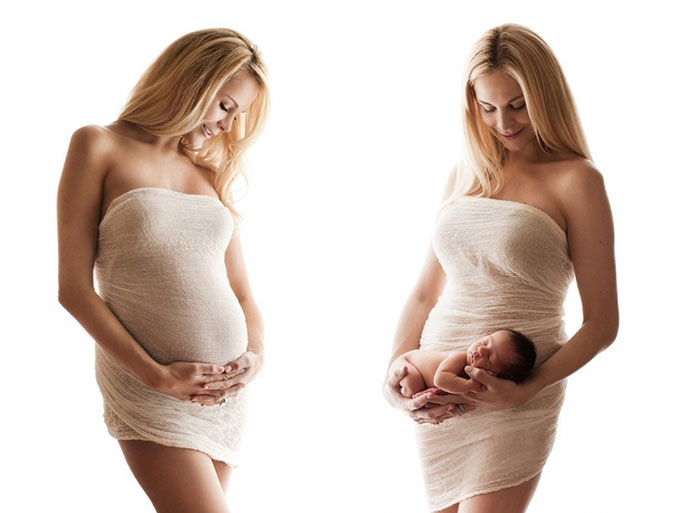
- Postpartum hemorrhage is rare but can happen. If your postpartum bleeding is filling more than a pad every hour, you should contact your doctor immediately. Without treatment, postpartum hemorrhage can be fatal.
- Headaches that are severe and don’t go away can also signal an underlying problem, especially coupled with high blood pressure. You could be in danger of having a stroke.
- Deep vein thrombosis (a blood clot in a deep vein) is a somewhat uncommon problem (1 in every 1,000 pregnancies) that can occur during or after pregnancy. Symptoms include leg pain or feeling like you have a pulled muscle. Your leg may also be red and hot to the touch. Left untreated, these clots can break away and travel to your lungs. When this happens, it can be life-threatening.
- Postpartum preeclampsia is rare and can develop within 48 hours after childbirth or as late as six weeks after childbirth. It is similar to preeclampsia (also called toxemia), which can occur while you’re pregnant.
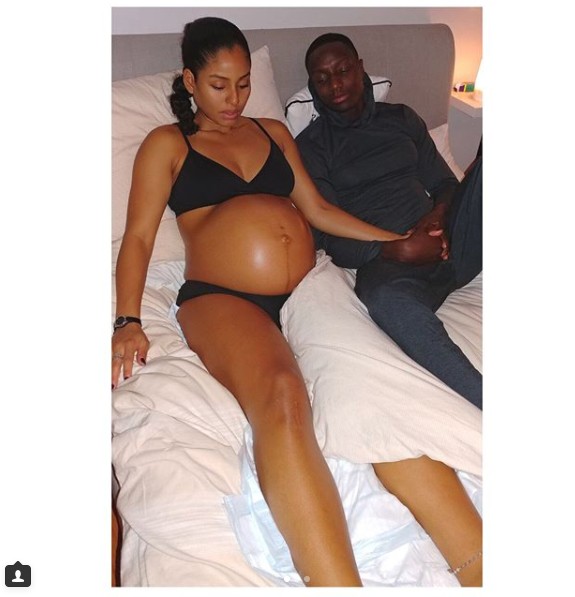 Both preeclampsia and postpartum preeclampsia cause your blood vessels to constrict (get smaller). This results in high blood pressure and also distresses your internal organs. Sometimes there are no obvious symptoms, unless you are monitoring your blood pressure. When you do have symptoms, they may include severe headache, swelling of your hands and feet, blurred vision, pain in the upper right portion of your body, and sudden weight gain. If you suspect you may have postpartum preeclampsia, call your doctor immediately.
Both preeclampsia and postpartum preeclampsia cause your blood vessels to constrict (get smaller). This results in high blood pressure and also distresses your internal organs. Sometimes there are no obvious symptoms, unless you are monitoring your blood pressure. When you do have symptoms, they may include severe headache, swelling of your hands and feet, blurred vision, pain in the upper right portion of your body, and sudden weight gain. If you suspect you may have postpartum preeclampsia, call your doctor immediately.
When to see a doctor
When you are recovering from delivery, it is best to err on the side of caution if you feel that something is not right with you or with the baby. You should expect to have some discomfort as you heal. You should not begin to feel worse.
In general, if you have any of these postpartum symptoms, call your doctor.
- Heavy vaginal bleeding that soaks more than one pad per hour or vaginal bleeding that increases each day instead of decreasing.

- Passing large clots (bigger than a quarter).
- Chills and/or a fever of more than 100.4°F.
- Fainting or dizziness.
- Changes to your vision or a severe headache (persistent).
- Painful urination or difficulty urinating.
- Vaginal discharge with a strong odor.
- Heart palpitations, chest pain or difficulty breathing.
- Vomiting.
- Incision from C-section or episiotomy is red, weepy (with pus), or swollen.
- Abdominal (lower belly) pain that is getting worse or new abdominal pain.
- Sore breasts that are red or feel hot to the touch.
- Pain in your legs with redness or swelling.
- Increase in swelling.
Questions to ask your doctor
- How long until I will feel like myself again?
- Why am I still retaining water?
- How many calories should I eat while I’m breastfeeding?
- When can I begin exercising?
- How long should I wait before having sex again?
- Can I get pregnant while I’m breastfeeding?
- Why is my hair falling out?
- Are there foods I shouldn’t eat while breastfeeding?
- Why aren’t I losing weight?
- What are my options for birth control?
- Will my breasts go back to normal?
- Why do I have no interest in sex?
Resources
Centers for Disease Control and Prevention (CDC): Depression Among Women
National Institutes of Health, MedlinePlus: Postpartum Care
Postpartum Support International
U.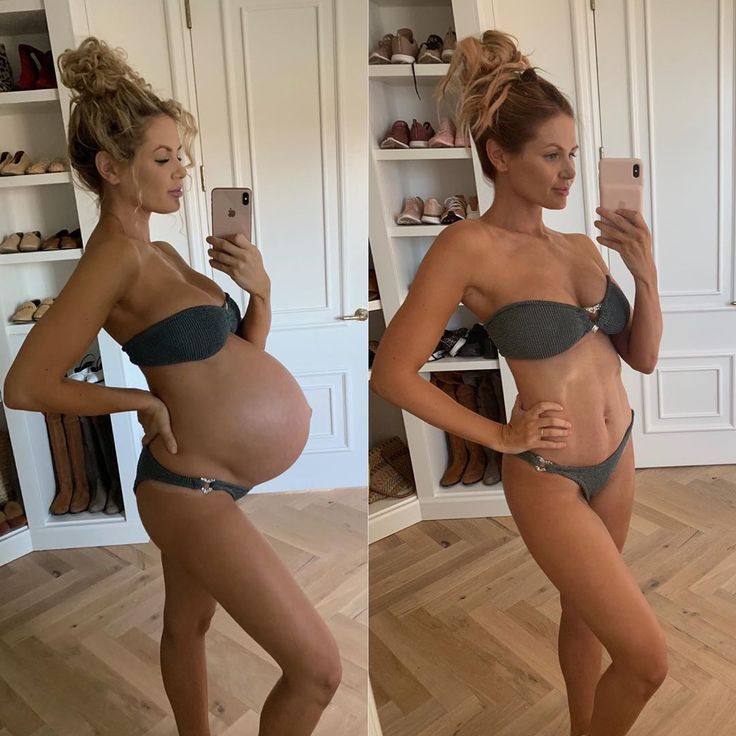 S. Department of Health and Human Services, Womenshealth.gov: Pregnancy: Recovering from Birth
S. Department of Health and Human Services, Womenshealth.gov: Pregnancy: Recovering from Birth
Your body after baby: The first 6 weeks
Your body changes a lot after you give birth. Some changes are physical and others are emotional.
Learn about common postpartum discomforts and what do to about them. If you’re worried about a discomfort, call your health care provider.
Talk to your provider before you take any medicine to treat a discomfort. If you’re breastfeeding, some medicines aren’t safe for your baby.
Go to all of your postpartum checkups, even if you’re feeling fine. Some health conditions after pregnancy need medical care.
How does your body change in the weeks after giving birth?
Many things are happening in your body right after you have a baby. During pregnancy, your body changed a lot. It worked hard to keep your baby safe and healthy. Now that your baby is here, your body is changing again. Some of these changes are physical, like your breasts getting full of milk. Others are emotional, like feeling extra stress.
Some of these changes are physical, like your breasts getting full of milk. Others are emotional, like feeling extra stress.
Many discomforts and body changes after giving birth are normal. But sometimes they’re signs or symptoms of a health problem that needs treatment. Go to all of your postpartum checkups, even if you’re feeling fine. These are medical checkups you get after having a baby to make sure you’re recovering well from labor and birth. At your checkups, your health care provider can help spot and treat health conditions. Postpartum care is important because new moms are at risk of serious and sometimes life-threatening health complications in the days and weeks after giving birth.
PHYSICAL CHANGES
What is perineum soreness?
The perineum is the area between your vagina and rectum. It stretches and may tear during labor and vaginal birth. It’s often sore after giving birth, and it may be more sore if you have an episiotomy.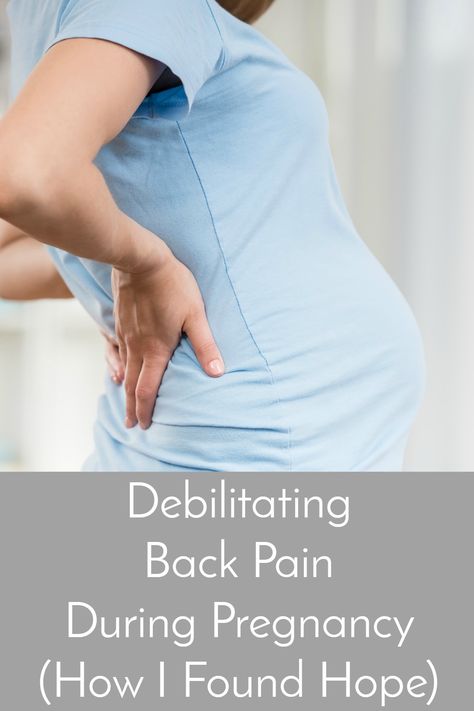 This is a cut made at the opening of the vagina to help let your baby out.
This is a cut made at the opening of the vagina to help let your baby out.
What you can do:
- Do Kegel exercises. These exercises strengthen the muscles in the pelvic area. To do Kegel exercises, squeeze the muscles that you use to stop yourself from passing urine (peeing). Hold the muscles tight for 10 seconds and then release. Try to do this at least 10 times in a row, three times a day.
- Put a cold pack on your perineum. Use ice wrapped in a towel. Or you can buy cold packs that you freeze in your freezer.
- Sit on a pillow or a donut-shaped cushion.
- Soak in a warm bath.
- Wipe from front to back after going to the bathroom. This can help prevent infection as your episiotomy heals.
- Ask your provider about pain medicine.
What are afterbirth pains?
Afterbirth pains are belly cramps you feel as your uterus (womb) shrinks back to its regular size after pregnancy. The cramps should go away in a few days. Right after you give birth, your uterus is round and hard and weighs about 2½ pounds. By about 6 weeks after birth, it weighs only 2 ounces.
Right after you give birth, your uterus is round and hard and weighs about 2½ pounds. By about 6 weeks after birth, it weighs only 2 ounces.
What you can do:
Ask your provider about over-the-counter medicine you can take for pain. Over-the-counter medicine is medicine you can buy without a prescription from your provider.
What body changes can happen after a c-section?
Cesarean birth (also called c-section) is surgery in which your baby is born through a cut that your provider makes in your belly and uterus. A c-section is major surgery, so it may take a while for you to recover. You may be really tired for the first few days or weeks after a c-section because you lost blood during the surgery. The incision (cut) on your belly may be sore.
What you can do:
- Ask your provider for pain medicine. Check with him before you take any medicine for pain.
- Ask your partner, family and friends to help you with the baby and around the house.

- Get rest when you can. Sleep when your baby sleeps, even when he naps during the day.
- Don’t lift from a squatting position. Don’t lift anything heavier than your baby.
- Support your belly with pillows when you’re breastfeeding.
- Drink plenty of water to help replace fluids in your body.
What is vaginal discharge?
After your baby is born, your body gets rid of the blood and tissue that was inside your uterus. This is called vaginal discharge or lochia. For the first few days, it’s heavy, bright red and may contain blood clots. Over time, the flow gets less and lighter in color. You may have discharge for a few weeks or even for a month or more.
What you can do:
Use sanitary pads until the discharge stops.
What is breast engorgement?
This is when your breasts swell as they fill with milk. It usually happens a few days after giving birth. Your breasts may feel tender and sore.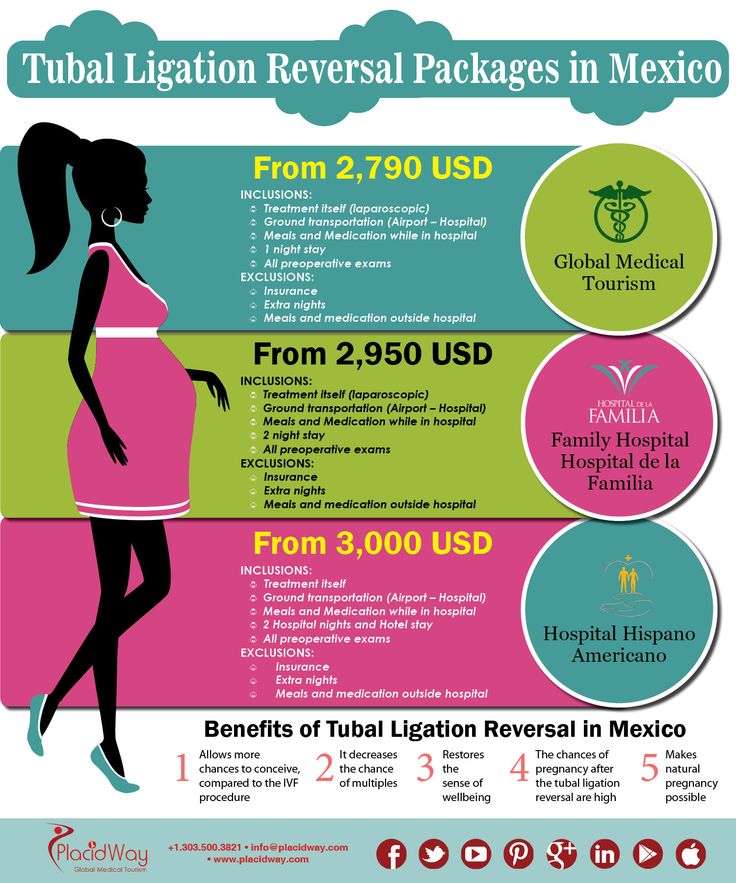 The discomfort usually goes away once you start breastfeeding regularly. If you’re not breastfeeding, it may last until your breasts stop making milk, usually within a few days.
The discomfort usually goes away once you start breastfeeding regularly. If you’re not breastfeeding, it may last until your breasts stop making milk, usually within a few days.
What you can do:
- Breastfeed your baby. Try not to miss a feeding or go a long time between feedings. Don’t skip night feedings.
- Before you breastfeed your baby, express a small amount of milk from your breast with a breast pump or by hand.
- Take a warm shower or lay warm towels on your breasts to help your milk flow. If your engorgement is really painful, put cold packs on your breasts.
- If your breasts are leaking between feedings, wear nursing pads in your bra so your clothes don’t get wet.
- Tell your provider if your breasts stay swollen and are painful.
- If you’re not planning to breastfeed, wear a firm, supportive bra (like a sports bra).
What is nipple pain?
If you’re breastfeeding, you may have nipple plain during the first few days, especially if your nipples crack.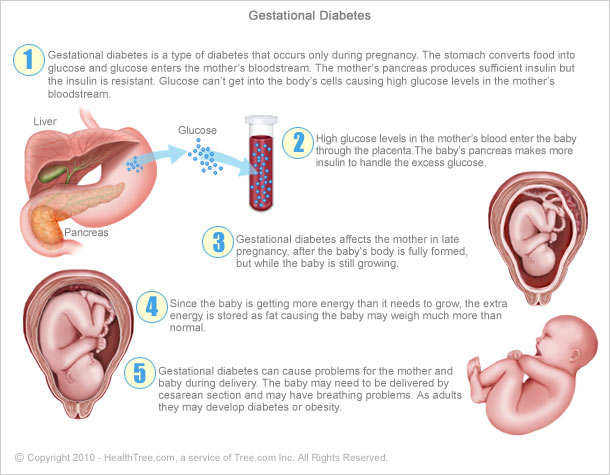
What you can do:
- Talk to your provider or a lactation consultant to be sure your baby is latching on to your breast the right way. A lactation consultant is a person trained to help women breastfeed, even women who have breastfeeding problems. Latching on is when your baby’s mouth is securely attached to (placed around) your nipple.
- Ask your provider about cream to put on your nipples.
- After breastfeeding, massage some breast milk onto your nipples. Let your breasts air dry.
What is swelling?
Lots of women have swelling in their hands, feet and face during pregnancy. It’s caused by extra fluids in your body. It may take time for the swelling to go away after you have your baby.
What you can do:
- Lie on your left side when resting or sleeping.
- Put your feet up.
- Try to stay cool and wear loose clothes.
- Drink plenty of water.
What are hemorrhoids?
Hemorrhoids are painful, swollen veins in and around the anus that may hurt or bleed.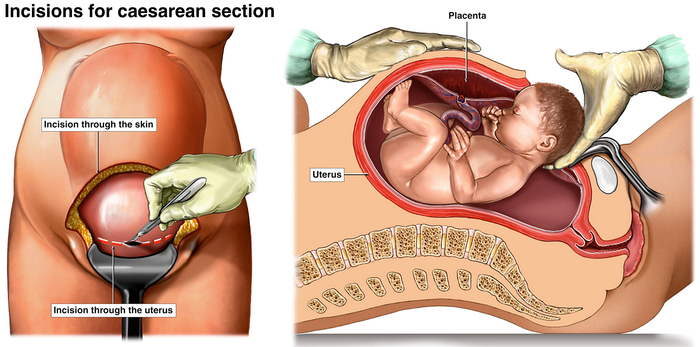 Hemorrhoids are common during and after pregnancy.
Hemorrhoids are common during and after pregnancy.
What you can do:
- Soak in a warm bath.
- Ask your provider about using an over-the-counter spray or cream for pain.
- Eat foods that are high in fiber, such as fruits, vegetables and whole-grain breads and cereals.
- Drink lots of water.
- Try not to strain when you’re having a bowel movement (pooping).
What is constipation?
Constipation is when you don’t have bowel movements, you don’t have them often or your stools (poop) are hard to pass. You also may have painful gas. This may happen for a few days after you give birth.
What you can do:
- Eat foods that are high in fiber.
- Drink lots of water.
- Ask your provider about medicine to take.
What urinary problems can happen after giving birth?
In the first few days after giving birth, you may feel pain or burning when you urinate (pee). Or you may try to urinate but find that you can’t. Sometimes you may not be able to stop urinating. This is called incontinence. It usually goes away as your pelvic muscles become stronger again.
Or you may try to urinate but find that you can’t. Sometimes you may not be able to stop urinating. This is called incontinence. It usually goes away as your pelvic muscles become stronger again.
What you can do for pain, burning or if you have trouble urinating:
- Drink lots of water.
- Run water in the sink when you go to the bathroom.
- Soak in a warm bath.
- If the pain continues, tell your provider.
What you can do for incontinence: Do Kegel exercises to strengthen your pelvic muscles.
Why do you sweat a lot after giving birth?
This happens often to new moms, especially at night. It’s caused by all the changing hormones in your body after pregnancy.
What you can do:
- Sleep on a towel to help keep your sheets and pillow dry.
- Don’t use too many blankets or wear warm clothes to bed.
Why do you feel tired after giving birth?
You may have lost blood during labor and birth. This can make your body tired. And your baby probably doesn’t let you sleep all night!
This can make your body tired. And your baby probably doesn’t let you sleep all night!
What you can do:
- Sleep when your baby sleeps, even when he naps during the day.
- Eat healthy foods, like fruits, vegetables, whole-grain breads and pasta, and lean meat and chicken. Limit sweets and foods with a lot of fat.
- Ask your partner, family and friends to help with the baby and around the house.
- Limit visitors. You’ll have plenty of time for family and friends to meet your new baby when you’re feeling rested.
When can you start losing weight after giving birth?
You lose about 10 pounds right away after giving birth and a little more within the first week. This is a great time to get to a healthy weight, no matter how much you weighed before you got pregnant. Eating healthy and being active every day helps boost your energy level and can make you feel better. If you’re at a healthy weight, you’re less likely to have health conditions, like diabetes and high blood pressure, than if you’re over- or underweight.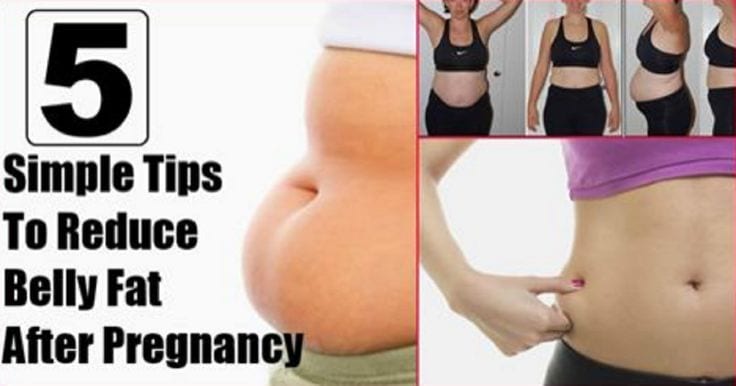 And just in case you get pregnant again, or if you’re planning to have another baby sometime in the future, it’s best to be at a healthy weight before your next pregnancy.
And just in case you get pregnant again, or if you’re planning to have another baby sometime in the future, it’s best to be at a healthy weight before your next pregnancy.
What you can do:
- Talk to your provider about your weight. If you were overweight before pregnancy, you may want to lose more weight than you gained during pregnancy.
- Eat healthy foods. Limit sweets and foods with a lot of fat.
- Drink lots of water.
- Ask your provider about being active, especially if you’ve had a c-section. Begin slowly and increase your activity over time. Walking and swimming are great activities for new moms. Do something active every day.
- Breastfeed your baby. Breastfeeding helps you burn calories. This can help you lose the weight you gained during pregnancy faster than if you weren’t breastfeeding.
- Don’t try to lose too much weight too fast. Your body needs nutrients from food to heal. If you’re breastfeeding, losing weight too fast can reduce your milk supply.
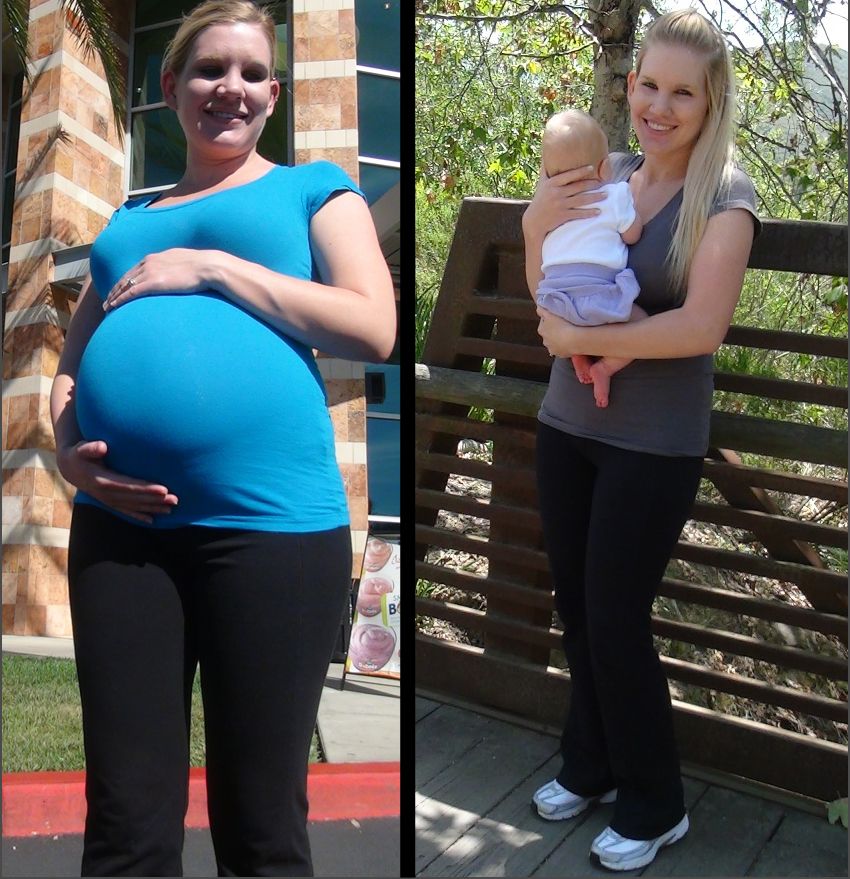
- Don’t feel badly if you don’t lose the weight as quickly as you’d like. It takes time for your body and your belly to get back in shape. Staying fit over time is more important than getting in shape right after giving birth.
What skin changes can happen after giving birth?
You may have stretch marks on your belly where your skin stretched during pregnancy. Some women also get them on their thighs, hips and bottom. They may not disappear after giving birth, but they do fade over time.
What you can do:
Use creams or lotions on your skin. They don’t make stretch marks go away, but they can help reduce itching that comes with stretch marks.
What hair changes can happen after giving birth?
Your hair may have seemed thicker and fuller during pregnancy. This is because high hormone levels in your body made you lose less hair during pregnancy. After your baby is born, your hair may thin out. You may even lose hair.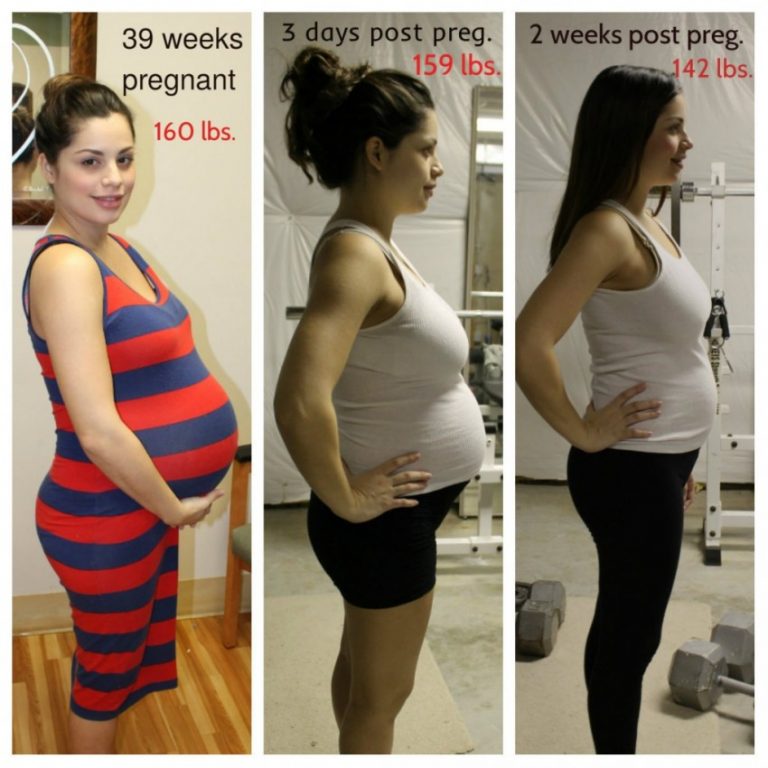 Hair loss usually stops within 6 months after you give birth. Your hair should regain its normal fullness within a year.
Hair loss usually stops within 6 months after you give birth. Your hair should regain its normal fullness within a year.
What you can do:
- Eat lots of fruits and vegetables. The nutrients in fruits and veggies may help protect your hair and help it grow.
- Be gentle with your hair. Don’t wear tight ponytails, braids or rollers. These can pull and stress your hair.
- Use the cool setting on your hair dryer.
When do you get your period again after pregnancy?
If you’re not breastfeeding, your period may start again 6 to 8 weeks after giving birth. If you are breastfeeding, it may not start again for months. Some women don’t have a period again until they stop breastfeeding. When your period returns, it may not be the same as before you were pregnant. It may be shorter or longer than it was. Over time it often returns to the way it was before you got pregnant.
When can you get pregnant again?
Many health care providers recommend waiting 4 to 6 weeks after giving birth to give your body time to heal before you have sex.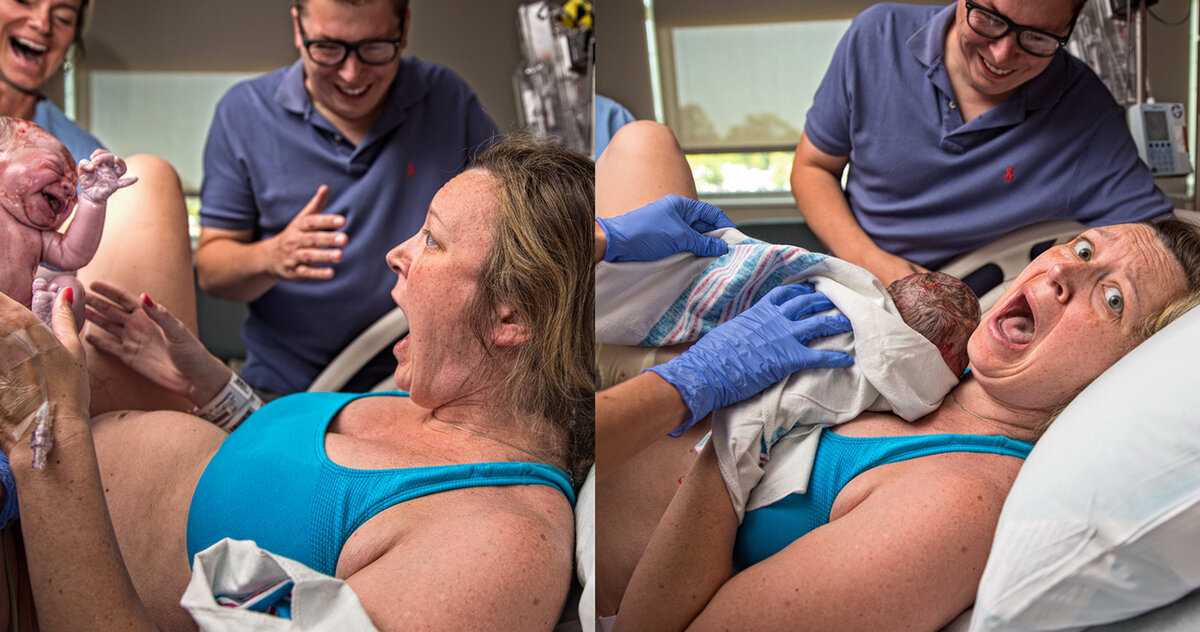 When you’re ready for sex, be careful – you can get pregnant even before your period starts. This is because you may ovulate (release an egg) before you get your period again.
When you’re ready for sex, be careful – you can get pregnant even before your period starts. This is because you may ovulate (release an egg) before you get your period again.
What you can do:
Use birth control to help make sure you don’t get pregnant again until you’re ready. Birth control helps keep you from getting pregnant. Examples of birth control include intrauterine devices (also called IUDs), implants, the pill and condoms. Talk to your provider about which birth control to use, especially if you’re breastfeeding. Some types of birth control can reduce your milk supply. Breastfeeding is not birth control. It does not prevent pregnancy.
For most women, it’s best to wait at least 18 months (1½ years) between giving birth and getting pregnant again. Too little time between pregnancies increases your risk of premature birth (before 37 weeks of pregnancy). Premature babies are more likely to have health problems than babies born on time.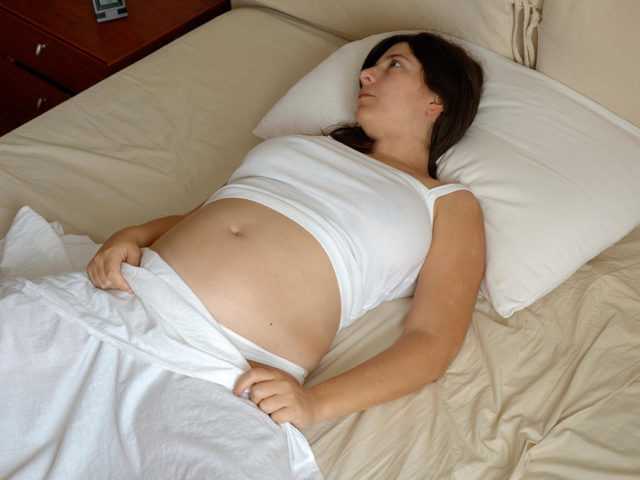 Your body needs time to fully recover from your last pregnancy before it’s ready for your next pregnancy.
Your body needs time to fully recover from your last pregnancy before it’s ready for your next pregnancy.
EMOTIONAL CHANGES
What can you do about feeling stressed and overwhelmed?
Your baby didn’t come with a set of instructions. You may feel overwhelmed trying to take care of her. Taking care of a baby is a lot to think about.
What you can do:
- Tell your partner how you feel. Let your partner help take care of the baby.
- Ask your friends and family for help. Tell them exactly what they can do for you, like going grocery shopping or making meals.
- Find a support group of new moms. A support group is a group of people who have the same kinds of concerns. They meet together to try to help each other. Ask your provider to help you find a support group of new moms near where you live. Or look for a support group online.
- Eat healthy foods and do something active every day.
- Don’t smoke, drink alcohol or use harmful drugs.
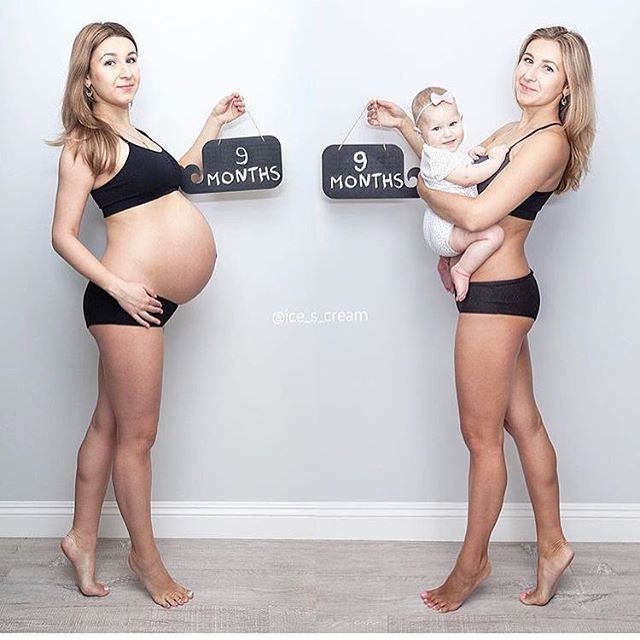 All of these things are bad for you and can make it hard for you to handle stress.
All of these things are bad for you and can make it hard for you to handle stress.
What are the baby blues and postpartum depression?
Baby blues (also called postpartum blues) are feelings of sadness a woman may have in the first few days after having a baby. Baby blues can happen 2 to 3 days after you have your baby and can last up to 2 weeks. They usually go away on their own, and you don’t need any treatment.
Postpartum depression (also called PPD) is a kind of depression that some women get after having a baby. It's strong feelings of sadness, anxiety (worry) and tiredness that last for a long time after giving birth. These feelings can make it hard for you to take care of yourself and your baby. PPD is a medical condition that needs treatment to get better. It’s the most common complication for women who have just had a baby.
What you can do about the baby blues:
- Get as much sleep as you can.
- Don’t drink alcohol, use street drugs or use harmful drugs.
 All of these can affect your mood and make you feel worse. And they can make it hard for you to take care of your baby.
All of these can affect your mood and make you feel worse. And they can make it hard for you to take care of your baby. - Ask for help from your partner, family and friends. Tell them exactly what they can do for you.
- Take time for yourself. Ask someone you trust to watch your baby so you can get out of the house.
- Connect with other new moms. Ask your provider to help you find a support group of new moms.
- If you have sad feelings that last longer than 2 weeks, tell your health care provider.
What you can do about postpartum depression:
- If you think you have PPD, tell your provider.
- Learn about risk factors for PPD and signs and symptoms of PPD.
- Ask your provider about treatment for PPD.
- If you’re worried about hurting yourself or your baby, call emergency services (911) right away.
How can you handle going back to work or school?
It may be hard for you to leave your baby with a caregiver all day, even if it’s a family member or a close friend. It also may be hard to find a caregiver you trust. You and your partner may disagree about what type of child care is best for your baby. You may be upset that you can’t stay home with your baby all the time.
What you can do:
- Talk to your partner about child care. Figure out how much you can spend and what kind of care you want. For example, you can have a caregiver come to your home to take care of your baby. Or you can take your baby to a child care center.
- Ask friends and family about child care they use. Maybe you can use the same person or service.
- If you’re using a child care center, ask for names and phone numbers of people who use the center. Call to ask how they feel about the center’s care.
- Ask your boss if you can ease back into work. Maybe you can work a few hours a day at first, or just a few days a week.
How can you and your partner get used to being new parents?
Both you and your partner are getting used to having a baby around. Your partner may be just as stressed and nervous about being a parent as you are. Rely on each other to figure things out.
What you can do:
- Learn about taking care of your baby together. Read baby-care books and go to baby-care classes.
- Let your partner help with the baby. Don’t try to do everything yourself.
- Talk to each other. Talking about your feelings can help keep you from feeling hurt and frustrated.
- Make time for just the two of you. Go for a walk or out to dinner. Ask someone you trust to take care of the baby for an hour or two.
- Tell your partner what your provider says about how long to wait to have sex again. Ask your provider to talk to your partner, if you think that’s helpful.
Last reviewed: July, 2018
See also: Your postpartum checkups, Warning signs and symptoms of health problems after giving birth, Maternal death and pregnancy-related death, Postpartum depression, Baby blues after pregnancy, Keeping breast milk safe and healthy, Birth control, How long should you wait before getting pregnant again
The first days in the hospital - articles from the specialists of the clinic "Mother and Child"
Bogomolova Marina Vadimovna
Embryologist
Clinic "Mother and Child" St. Petersburg
Immediately after childbirth
Immediately after the birth of the child is placed on the mother's stomach , then the umbilical cord is cut and the baby is applied to the mother's breast. Then the skin of the newborn is cleaned, its length and weight, head and chest circumference are measured. The doctor examines the birth canal, if necessary, sews up tears in the soft tissues of the birth canal, assesses the tone of the postpartum uterus, and helps the woman empty her bladder. But even after all these standard manipulations, the mother is not transferred to the postpartum ward, another for two to three hours, the puerperal stays in the maternity block . Why? In the first two hours after childbirth, some complications are possible, primarily uterine bleeding or an increase in blood pressure. Therefore, during these two hours, the mother lies on a stretcher or a bed in the maternity ward, since doctors and midwives are constantly there, and the operating room, in which case, is also located nearby. The child at this time is usually taken to the children's department, where he most often sleeps. And only two hours later, if everything is fine, the mother is transferred to the postpartum ward. nine0003
How does a woman feel at this time? Chills may occur, abdominal pain may occur, especially in multiparas.
What should a woman do at this time? Relax and unwind. Take shelter so as not to freeze, especially if chills appear. Place an ice pack on the uterus. If possible, ask the midwife to bring hot tea.
1st day after birth0009 postnatal midwife . She will tell you about the arrangement of the department (where the shower, toilet, dining room are), about the daily routine (the time for visiting doctors, eating) and will help the young mother, if necessary, to empty the bladder using a catheter. If a woman lies together with the baby, then immediately after the transfer to the postpartum ward, the child will be brought to her. The midwife will help the mother to properly attach the baby to the breast and start breastfeeding. Then nurse will come and show you how to swaddle your baby and explain how to take care of him. Do not be afraid that after childbirth there will not be enough strength for the child: most newborns sleep most of the day and wake up only for feeding. In addition, in the maternity hospital, the child is usually washed and dressed by nurses, so that the woman will have enough time to relax. If there is no joint stay of mother and child in the maternity hospital, then every three hours they will bring him to the ward for feeding, and then take him back to the children's department. Over time, the woman herself will pick up and carry the child. nine0003
How does a woman feel at this time? On the first day after giving birth, women feel differently. Some experience an incredible elation (this is due to the release of endorphins into the blood - the hormones of pleasure), while others, on the contrary, feel very tired. Some want to call all their friends and announce the birth of a child, they are inspired, full of energy and ready to take care of the baby on their own. Other mothers want to be alone and come to their senses, they do not yet have the strength to constantly be with the child. nine0003
What should a woman do at this time? In any case, immediately after childbirth, as after any heavy load, you need to restore strength: first eat, and then go to bed or just relax. By the way, the following situation is possible: the birth occurred in the evening or at night, and dinner time has already expired; therefore, in order not to starve, you need to bring something light for a snack (cookies, bread rolls) with you to the hospital in advance.
6 hours after birth, the mother can usually get out of bed. nine0003
In general, if the childbirth went without complications, then you should start getting up as early as possible, first with the help of a midwife, and then on your own.
This helps to improve blood circulation, normalize the functioning of the urinary system and intestines, and accelerate healing processes. In addition, very soon the baby will require more attention.
Important point: After childbirth, the tone of the bladder decreases, so the urge to urinate may be absent or it may become painful and frequent. However, you should go to the toilet at least four times a day. Urination can be caused reflexively by opening a tap with water, this helps many people a lot. In the absence of the desired effect, urine is removed by a catheter. Most often there is no stool on the first day after birth. nine0003
Next days
Every day, the mother will be examined by an obstetrician-gynecologist : he will evaluate the contraction of the uterus, the condition of the sutures and the amount of discharge, see if colostrum is secreted. The midwife will regularly measure the temperature, pulse, blood pressure and treat the external stitches with disinfectant solutions several times a day. Also, every day the baby will be watched by a pediatrician, after which he will tell his mother about the condition of the child. After a normal birth, a woman, as a rule, is discharged on the 3rd-4th day (after a caesarean section - on the 5th-6th). nine0003
How does a woman feel at this time?
After childbirth, a woman may experience pain in the abdomen due to uterine contractions, as well as slight muscle pain in different parts of the body. On the face and on the whites of the eyes, a “rash” may appear - pinpoint hemorrhages that appear due to the fact that small capillaries burst during attempts from tension. Blood pressure can be lowered, so dizziness is possible (to avoid it, you should get up smoothly, without sudden movements). There may be pain in the perineum, even if there were no tears and its incision (pain appears because the perineum was severely stretched during childbirth). If the perineum is sutured, then it will not be possible to sit for at least the first two weeks. Sometimes after childbirth, varicose veins appear in the anus (hemorrhoids), which means discomfort in this place. nine0003
What should a woman do at this time? Mom needs to continue to rest and gain strength. And you should also follow the rules of personal hygiene: often change postpartum pads, do air baths for seams (if any), take a shower daily, wash yourself every time after a bowel movement. Well, the most important thing is to establish breastfeeding and learn how to take care of the baby in practice.
Time in the maternity hospital flies very quickly. Try to spend it usefully - restore your strength and acquire useful skills: at home, all this will be very useful to you! nine0056
REMINDER
Things to do at the maternity hospital
- Have a good rest: sleep all your free time and eat well.
- Get complete information about your child's condition: so ask your pediatrician all your questions.
- Establish contact with the child: therefore, spend as much time with the baby as possible, ideally being with him all the time.
Take the baby in your arms, unfold the diapers, carefully examine the baby without clothes. nine0090
- Learn how to take care of your baby: so ask your baby nurse to show you how to wash your baby, change clothes, swaddle, change diapers, clean ears and nose, cut nails.
- Establish breastfeeding: To do this, feed your baby on demand. Ask the midwife to show you how to properly hold the baby at the breast, how to give and take away the breast.
Make an appointment
to the doctor - Bogomolova Marina Vadimovna
Clinic "Mother and Child" St. Petersburg
Cryopreservation of single spermatozoa Cryopreservation of embryos, eggs, spermJoint consultation of a reproductive specialist and an embryologistEmbryology
By clicking on the send button, I agree to the processing of personal data
Attention! Prices for services in different clinics may vary. To clarify the current cost, select a clinic
nine0002 Clinical Hospital MD GROUP LAHTAK Clinic "Mother and Child" St.All directionsSpecialist consultations (adults)Molecular genetics laboratoryGeneral clinical researchTreatment roomOther gynecological operationsTelemedicine for adultsTherapeutic researchUltrasound examinations for adults
nine0002 01.Consultations of specialists (adults)
02.
Laboratory of molecular genetics
03.
General clinical studies
04.
Procedure cabinet
05.
other gynecological operations
06.
06. 06. 06. 06. 9000.9000 06. Adult telemedicine07.
Therapeutic research
08.
Adult ultrasound
Nothing found
The administration of the clinic takes all measures to timely update the price list posted on the website, however, in order to avoid possible misunderstandings, we advise you to clarify the cost of services and the timing of the tests by calling
CAN A WOMAN GIVE BIRTH THROUGH THE BIRTH CANAL AFTER A PREVIOUS CAESAREAN SECTION?
Quite a number of women who have given birth by caesarean section in the past can give birth to a child through the natural birth canal, without risk to their health. Attempted vaginal delivery after a previous caesarean section (VRCS) has a high rate of successful vaginal delivery and many advantages over an elective repeat caesarean section. nine0003
In cases where a vaginal birth attempt fails, a second caesarean section is performed.
Unfortunately, the presence of certain health problems or the peculiarities of the course of pregnancy and the upcoming birth, make the attempt of vaginal delivery in the presence of a scar on the uterus, in some women too risky - in this case, the patient will be recommended for a repeat caesarean section.
WHAT ARE THE BENEFITS AND RISKS OF VAGINAL BIRTH AFTER A PREVIOUS CAESAREAN SECTION? nine0003
There are several advantages of vaginal delivery in the presence of a uterine scar compared to a repeated caesarean section: reduced blood loss; no postoperative wound and reduced risk of infection; no risks associated with surgery and anesthesia; shorter duration of hospitalization; less painful sensations; in subsequent pregnancies, the risk of complications such as placenta previa and placenta ingrowth into the wall of the uterus is reduced. Delivery by caesarean section is becoming more frequent. Attempted vaginal delivery with a scar on the uterus after caesarean section is completed successfully in 75% of cases. The reasons for choosing this method of childbirth are varied. Sometimes, the obstetrician - gynecologist may recommend that the pregnant woman undergo a repeated caesarean section instead of attempting vaginal delivery due to the presence of a scar on the uterus after the previous surgical intervention. Completion of an attempted vaginal birth with a uterine scar after caesarean section by a repeat caesarean section when certain obstetric situations occur. Uterine rupture occurs in 0.2 - 0.7% of cases of vaginal delivery with a scar on the uterus after caesarean section. However, vaginal delivery is a safe method of delivering a baby in patients with a history of caesarean section. nine0003
WHAT SHOULD A PREGNANT WOMAN NEED TO KNOW?
The possibility of attempting vaginal delivery with a scar on the uterus after caesarean section in each case is determined by the doctor.
